One of the most mysterious things of my childhood was a lush green mountain in front of my native home. For a long time, the peak of the mountain was the highest ever point on the earth and I always wondered to imagine the view from the top. I had believed that if my home was up there, I would have been living in the paradise. But the day when I observed the same mountain from a distant point, I was surprised to see that the mountain of the village was nothing in comparison to the lofty snowy peaks behind it. That day marked the moment when I saw the Dhauladhar Himalayas for the first time and my imaginations made a shift from the view from the top of the village mountain to the view from the high altitude Himalayas.
After visiting many places around and trans Dhauladhar and other Himalayan ranges in general, and after having received the virtual views from the summit of many mountains on Google Earth, the mystery of appearance of the world from the top of Dhauladhar had got dissolved to a great extent. So the day I landed on the crest of Dhauladhar at an altitude of 4300 meters above sea level, I could relate and compare the original view with my childhood imaginations and with what I expected based on my earlier experiences of Himalayas.
After day 1 starting from Mcleodganj of Dharamshala, on the 5th day of Himalayan trekking we reached the top of Indrahar pass. The 5th-day journey, from Lahesh cave to the top of Inderhar Pass, perhaps was the steepest and toughest treks I had experienced by that time. Dhauladhar Himalaya is a high-altitude barrier between Kangra and Chamba valleys of Himachal Pradesh and there are no motorable roads on any of the high altitude passes to connect them. However, there are a number of trekking routes, Inderhar Pass being one of them. The trekking route to Indrahar pass is well noticeable till the place from where Laka Glacier starts (3200m) but beyond that point the slope becomes steep and the trekking route starts to fade away and passes over the massive boulders which sometimes make it difficult to find the exact direction to move on. However, the route was traced out by spotting some rocks which were marked with red paint. In the region where we did not expect to see any human, 3 shepherds along with their herd of hundreds of goats and sheep, who were coming from the other side of the mountain, put us in the right direction. Sometime after our progression, the whole area started to get covered with the dense clouds and within a few minutes, the visibility went so down as if the sun was about to set. In those hazy surroundings, I had assumed that even at the top I would find myself in the middle of clouds and so would have to wait for a long time for the clouds to get disperse to get a transparent view from the top of the pass. But as soon as we reached the crest of the mountain, the first view of the other side of the mountain created a euphoric moment. We were at the natural border of the cloudy and clear sky. While nothing was visible at the side we came from, another side had full sunlight and we could clearly see the Peer-Panjal range, Manimahesh mountain, Chamba Valley and northern slope of Dhauladhar range. The panorama of Pir-Panjal range refreshed the memories of time spent in Lahaul and Pangi region and of crossing Sach Pass. Another thing I experienced for the first time was to be exactly at the sharp crest of any of the Himalayan mountains, as on the immediate southern side of the apex of the Indrahar Pass was the slope of Kangra valley, while on the immediate northern side was the Chamba valley slope. From the administration point of view, I was on the border of Chamba and Kangra districts of Himachal Pradesh.
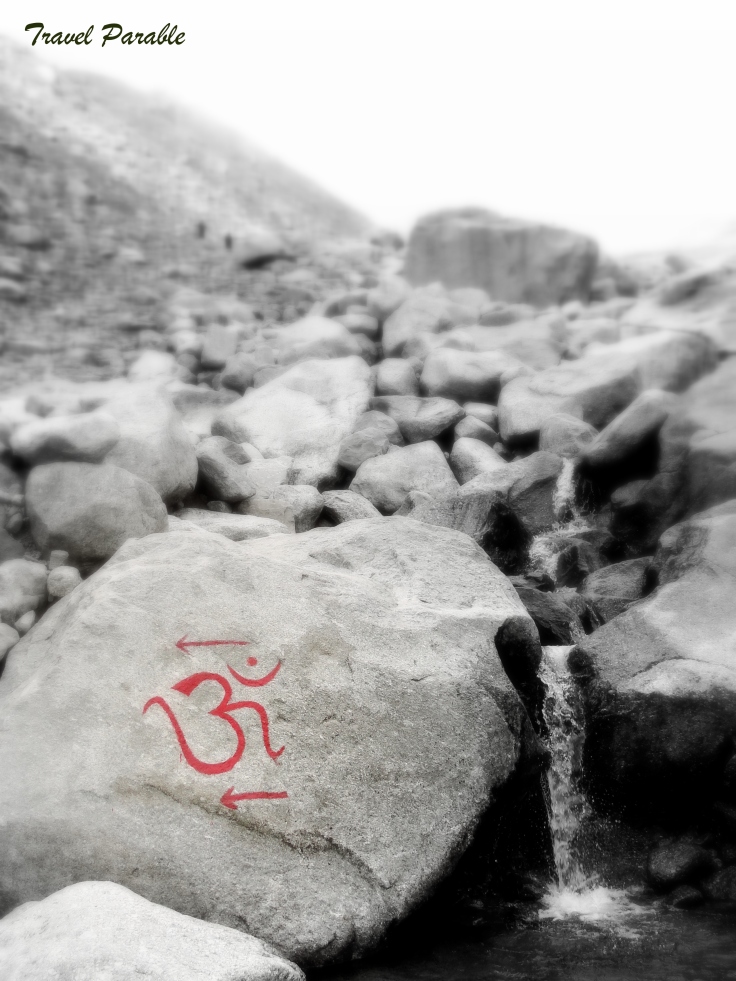


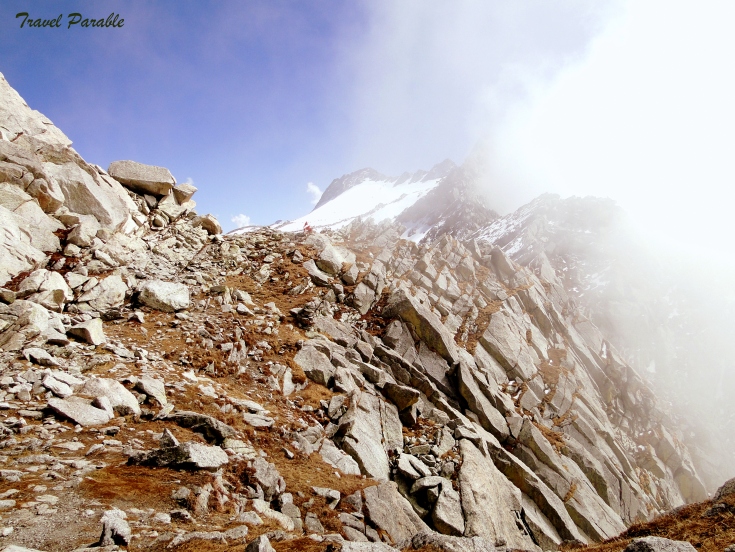




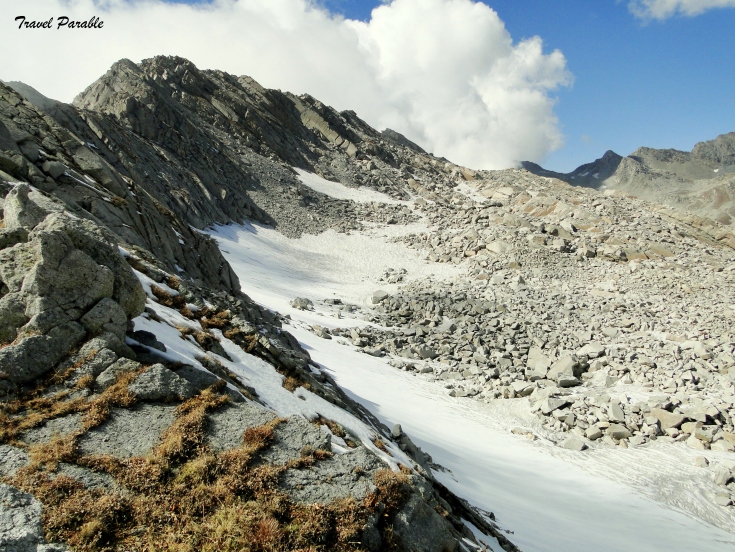


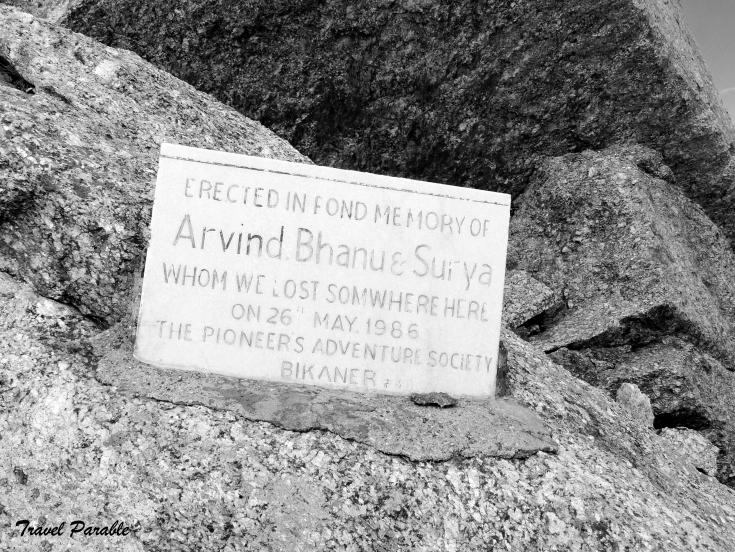
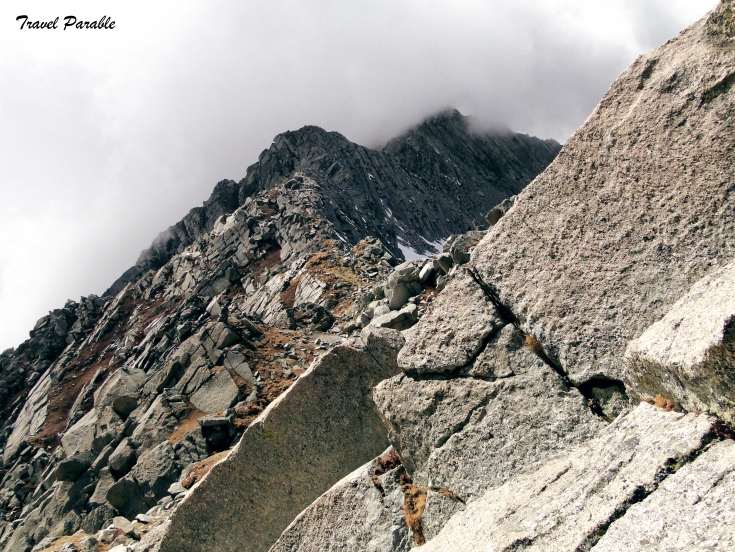
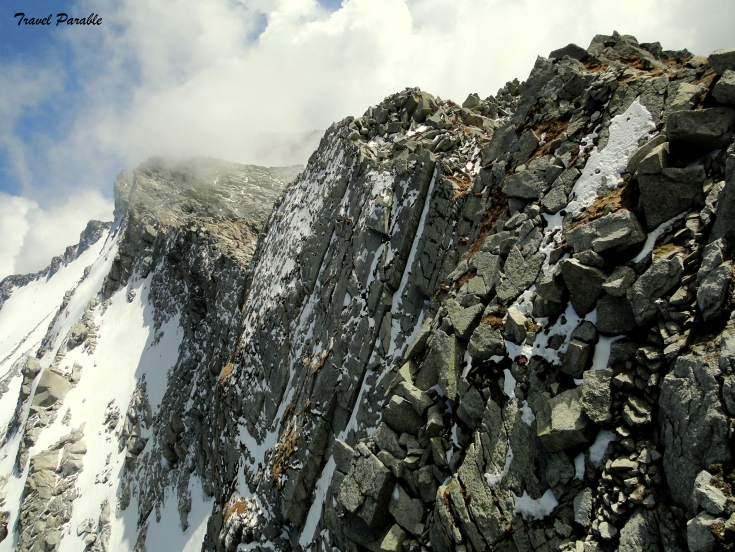

I spent around one and a half hour at the apex. It was the moment of reliving the childhood imaginations and to view them in front of my eyes. Although I was there for the first time, I already had a generalised idea about the view from there. I knew that I would be able to see the Peer-Panjal range, Mani-Mahesh Mountain and Chamba and Kangra valleys from the top. But I also recognised that knowing something and to experience the same are two different things. So although I had some idea what it would be like to be at the crest of Dhauladhar, I acknowledged that originality could be observed only by to be at that place. My time at Indrahar reminded me that I was still deprived of the original feel from my village mountain. I also noticed that the original experience could have been much more strong and significantly different if I had not taken any digital view from the Google Earth. I remember, somewhere I read a statement which says, “To keep life interesting, avoid knowing everything.”

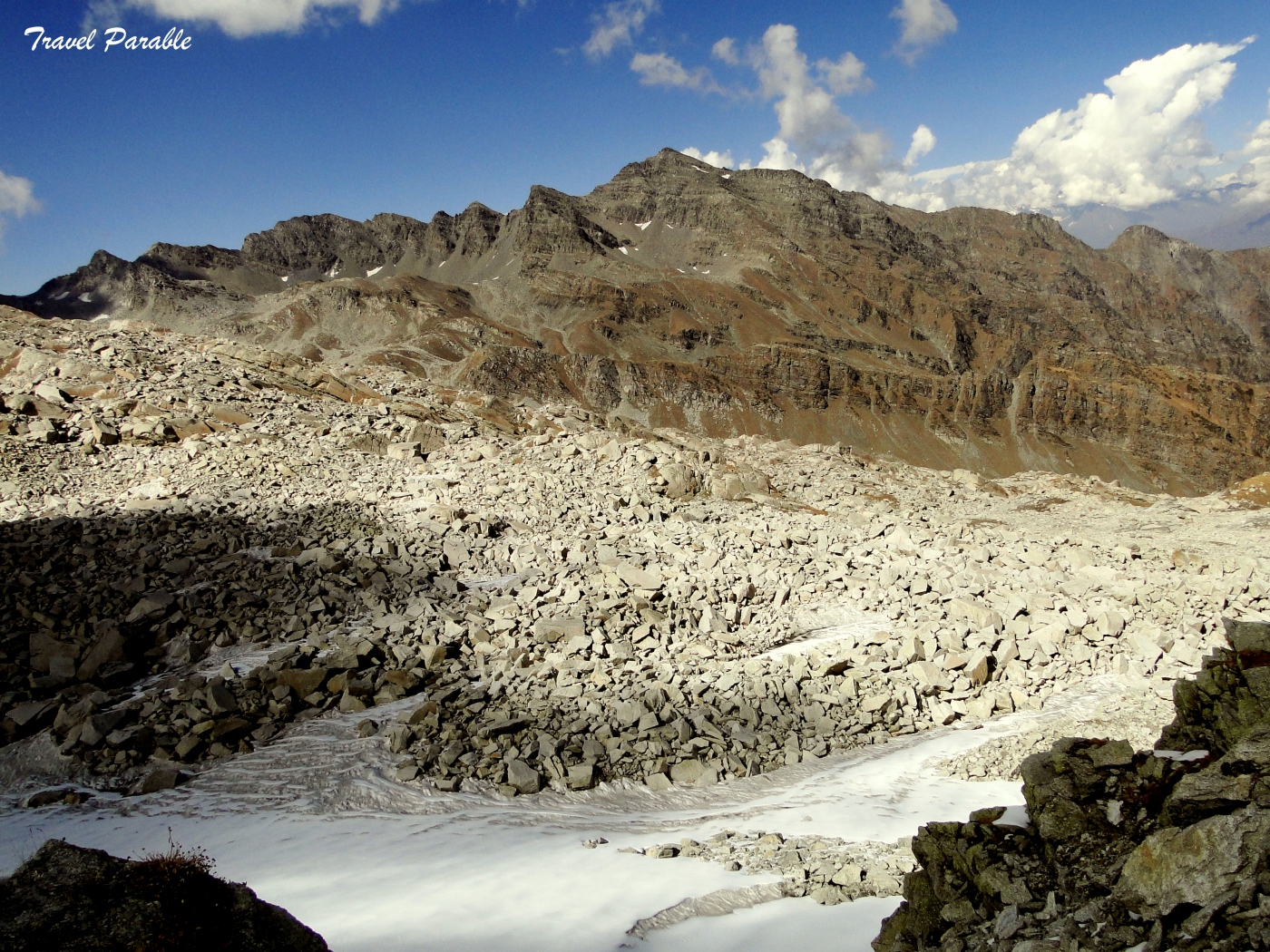
Amazing!! Stunned to see the beauty of raw nature!! Very beautifully compiled glimses of nature.
Knowing a thing and experiencing are very different..I can compare like knowing divinity and experiencing its presence are probably two different things!!
LikeLiked by 1 person
Thank you for your views. Rather than knowing and then experiencing, we should try to know by experiencing 🙂
LikeLike
Perspective is everything! Lovely images.
LikeLiked by 1 person
well said. Perspective is everything 🙂 Thanks for your words
LikeLiked by 1 person
Amazing pics and a beautiful write up
LikeLiked by 1 person
Thanks for having a look. 🙂
LikeLike
To keep life interesting, avoid knowing everything.” – Completely true! We are bombarded with information, and I admit I’m hungry for it, but I appreciate that you pointed out exactly the pitfall.
The dark and the beautiful for sure, and that rawness you experience in places like this is so valuable. It’s good to be reminded of mortality when surrounded by all that extraordinary, uplifting scenery.
I love reading about your experience at the “sharp crest” and coming from clouds into the light. Thank you for allowing me some vicarious pleasure, and a bit of dreaming!
LikeLiked by 1 person
Yes, we all humans want to know more, explore more. That is our inherent behaviour. But I realise that the problem starts when we focus more on digital virtual information than on what really exists. That’s why now whenever I travel to any new place, I keep in mind not to do much research. I prefer to go to new place, settle there for long and then to explore to know the hidden. Soon I will share my new work how I try to do this. Thank you for your words.
LikeLike
I’m looking forward to hearing more of what you have to say about research before travel, because I find there are positive outcomes too – e.g. I’m taking a trip next week and I found out there’s a particular town in the area I think I would like, but if I didn’t do the research I might not have heard about the town until it was too late. Ideally we could spend weeks and weeks in new places and really get to know them, from the ground up, first-hand.
LikeLiked by 1 person
Great. I liked it
LikeLiked by 1 person
Thank You 🙂
LikeLike
Mesmerising post.. ! Felt like i was out there, loosing myself between the mountains..that video clip dropped me directly there and you are lucky enough to experience it in person…!
LikeLike
Thanks for having a look and for your views. Its my pleasure that the the post made you feel to be at the mountains. As I have mentioned in the text that knowing something and to experience the same are two different things, I hope you will also make it to the pass to collect the original feel 🙂
LikeLike
I have grown up on the foothills of the Himalayas yet I didnt know about the Indrahar Pass. Thanks for sharing these amazing visuals. One of my favorite quotes (Shakespeare) is “Hope to joy is better than hope enjoyed.” I find it so true and applicable to life – our expectations are high and in our rush to ‘see’ everything we often fail to enjoy when we are actually there.
LikeLike
Very true. It happens that what we have enjoyed so much in imaginations, do not give same level of excitement when actually there. So the key is when actually there, take long breaths, stop any kind of imaginations (of future or past) and just start to observe, observe in the present moment. And perhaps this is applicable on everyday life. Thanks for your words and your views. And this pass can be reached starting from Dharamshala of district Kangra of Himachal Pradesh.
LikeLike
Somehow my comment disappeared… Thank you for this beautiful story. I read it with a feeling I was there at that time. I particularly liked the last thought you wrote, “To keep life interesting, avoid knowing everything”. That is exactly what I can’t do, because I have a worm, named “curiosity”, which pushes his nose into everything possible to learn. Keep up your wonderful work!
LikeLike
Thank you Ron… I agree with you… Curiousity is a blessing 🙂 Keep learning and keep sharing
LikeLike
Beautiful! Really Beautiful I love it!!
LikeLike
Thank you for you words.. 🙂
LikeLike
Outstanding and nice experience shared.It depicts that clear ,well designed & focused mind frame can lead to reality of childhood fantasy.Keep focusing towards next goal.Life is about to live your own life.
LikeLike
Travel Parable is meant to share all of my experiences, I have gained so far, and which will be gained, during the course of my journey inside the mind and around the world. Thank you for your words 🙂
LikeLike
Wow.. Beautiful.. I was lost in images.
LikeLike
Beautiful documentation of the Inder agar pass of Dev Bhoomi Himachal..
LikeLike
The innocence of childhood…And still, the world is beautiful even now, no matter how high you go, i guess. I like what you say at the beginning of the blog. Distance is distance unless traveled. I like to believe that there’s no distance, only a new road to explore.
LikeLike
Perhaps there is no distance. .. to experience no distance, first need to understand what distance is.. explore, experience, know and then leave.. thanks for your words
LikeLike
Mesmerizing video. Beautiful Himachal
LikeLike
Beautiful indeed 🙂
LikeLike
Beautiful pics. To be on the top of a mountain must have been amazing ..
LikeLike